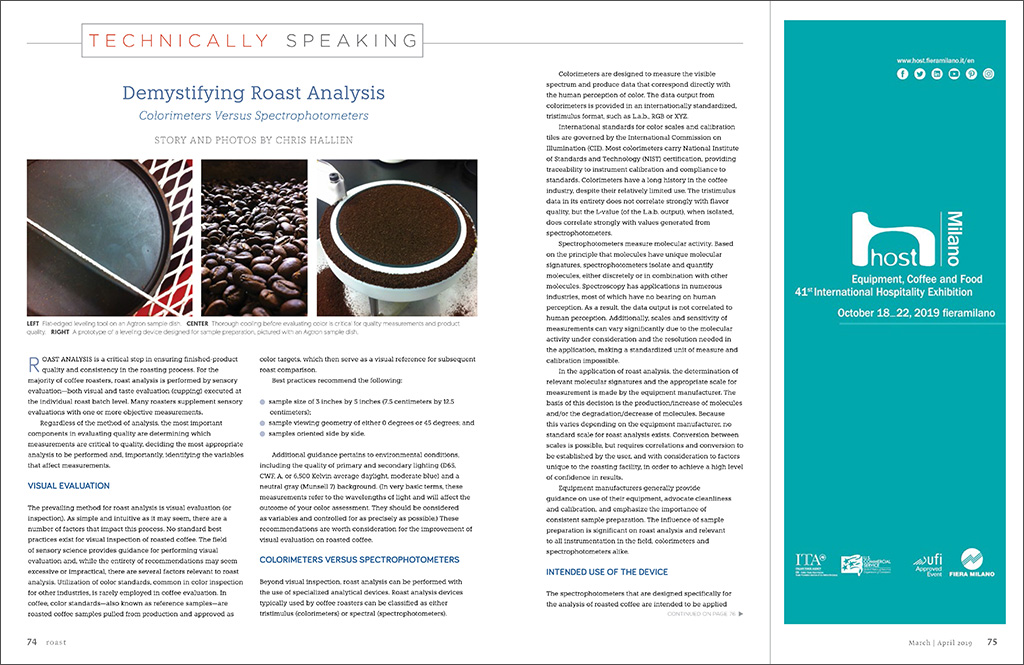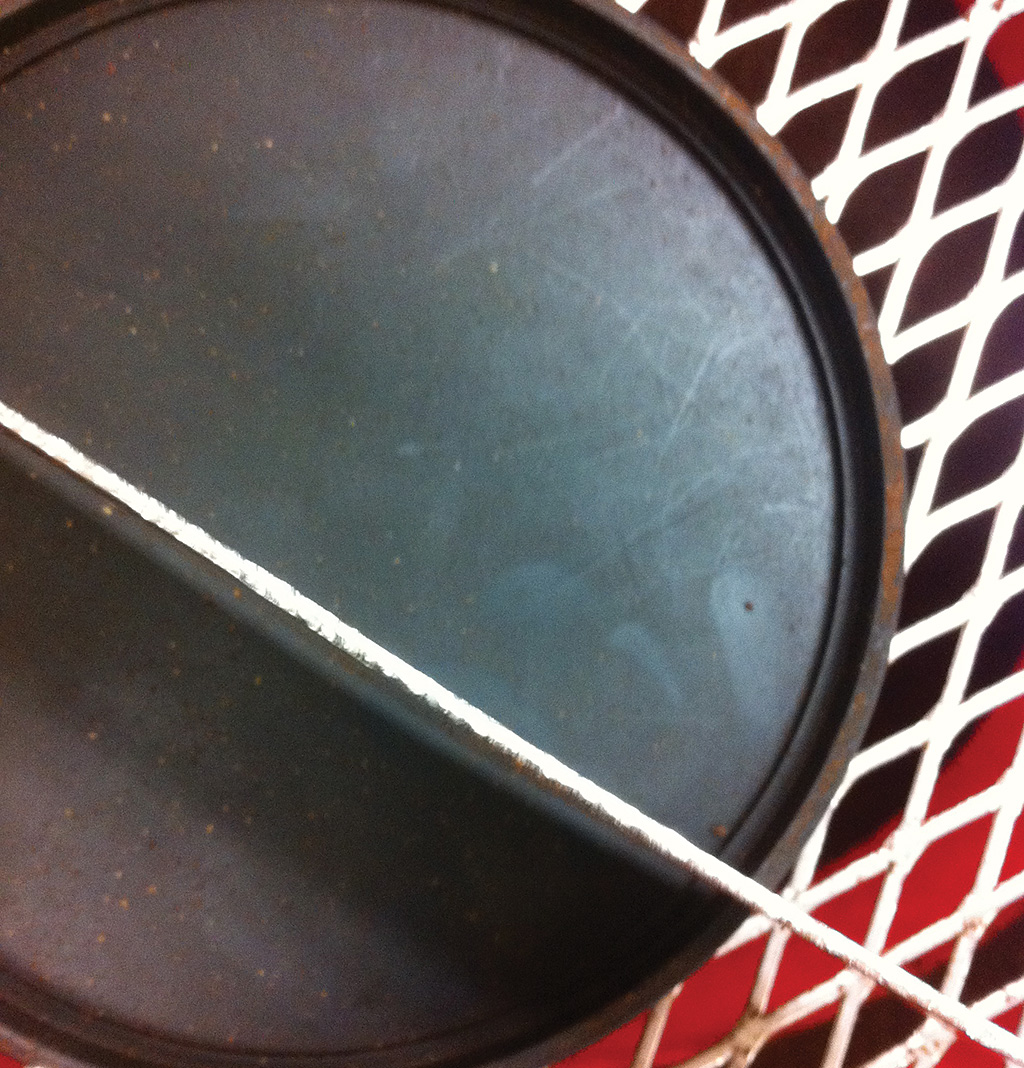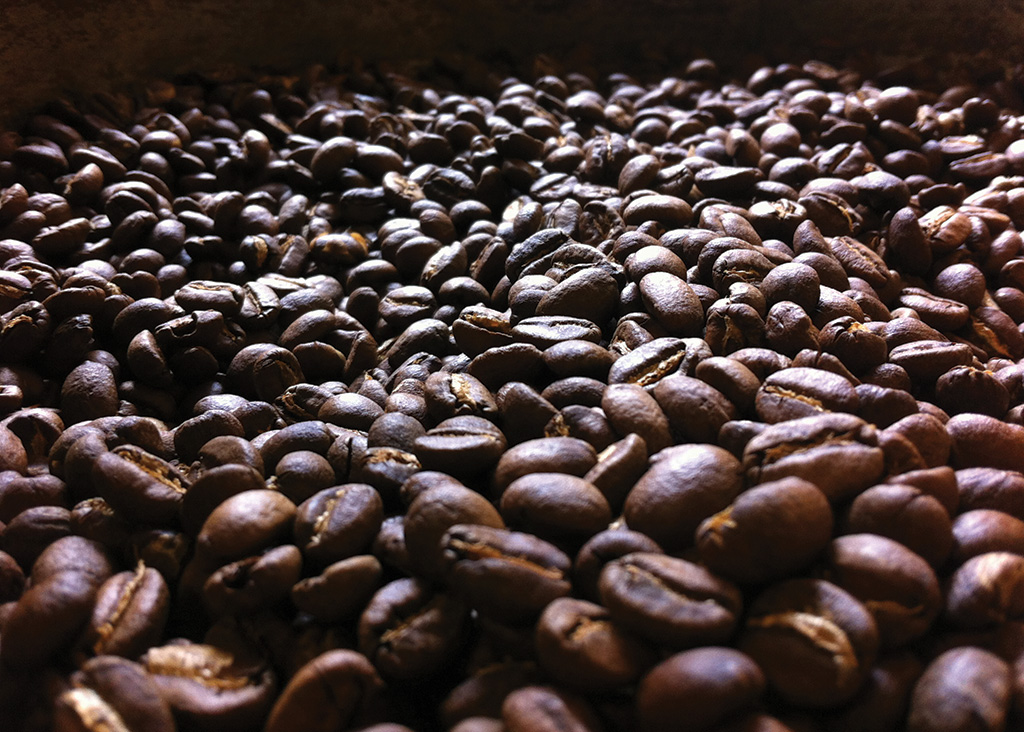(Editor’s note: This is a preview of an article by Chris Hallien that appeared in the March/April 2019 issue of Roast magazine. Click here to read the full article.)
Roast analysis is a critical step in ensuring finished-product quality and consistency in the roasting process. For the majority of coffee roasters, roast analysis is performed by sensory evaluation — both visual and taste evaluation (cupping) executed at the individual roast batch level. Many roasters supplement sensory evaluations with one or more objective measurements.
Regardless of the method of analysis, the most important components in evaluating quality are determining which measurements are critical to quality, deciding the most appropriate analysis to be performed and, importantly, identifying the variables that affect measurements.
Visual Evaluation
The prevailing method for roast analysis is visual evaluation (or inspection). As simple and intuitive as it may seem, there are a number of factors that impact this process. No standard best practices exist for visual inspection of roasted coffee. The field of sensory science provides guidance for performing visual evaluation and, while the entirety of recommendations may seem excessive or impractical, there are several factors relevant to roast analysis. Utilization of color standards, common in color inspection for other industries, is rarely employed in coffee evaluation. In coffee, color standards — also known as reference samples — are roasted coffee samples pulled from production and approved as color targets, which then serve as a visual reference for subsequent roast comparison.
Best practices recommend the following:
- sample size of 3 inches by 5 inches (7.5 centimeters by 12.5 centimeters);
- sample viewing geometry of either 0 degrees or 45 degrees; and
- samples oriented side by side.
Additional guidance pertains to environmental conditions, including the quality of primary and secondary lighting (D65, CWF, A, or 6,500 Kelvin average daylight, moderate blue) and a neutral gray (Munsell 7) background. (In very basic terms, these measurements refer to the wavelengths of light and will affect the outcome of your color assessment. They should be considered as variables and controlled for as precisely as possible.) These recommendations are worth consideration for the improvement of visual evaluation on roasted coffee.
Colorimeters versus Spectrophotometers
Beyond visual inspection, roast analysis can be performed with the use of specialized analytical devices. Roast analysis devices typically used by coffee roasters can be classified as either tristimulus (colorimeters) or spectral (spectrophotometers).
Colorimeters are designed to measure the visible spectrum and produce data that correspond directly with the human perception of color. The data output from colorimeters is provided in an internationally standardized, tristimulus format, such as L.a.b., RGB or XYZ.
International standards for color scales and calibration tiles are governed by the International Commission on Illumination (CIE). Most colorimeters carry National Institute of Standards and Technology (NIST) certification, providing traceability to instrument calibration and compliance to standards. Colorimeters have a long history in the coffee industry, despite their relatively limited use. The tristimulus data in its entirety does not correlate strongly with flavor quality, but the L-value (of the L.a.b. output), when isolated, does correlate strongly with values generated from spectrophotometers.
Spectrophotometers measure molecular activity. Based on the principle that molecules have unique molecular signatures, spectrophotometers isolate and quantify molecules, either discretely or in combination with other molecules. Spectroscopy has applications in numerous industries, most of which have no bearing on human perception. As a result, the data output is not correlated to human perception. Additionally, scales and sensitivity of measurements can vary significantly due to the molecular activity under consideration and the resolution needed in the application, making a standardized unit of measure and calibration impossible.

A prototype of a leveling device designed for sample preparation, pictured with an Agtron sample dish.
In the application of roast analysis, the determination of relevant molecular signatures and the appropriate scale for measurement is made by the equipment manufacturer. The basis of this decision is the production/increase of molecules and/or the degradation/decrease of molecules. Because this varies depending on the equipment manufacturer, no standard scale for roast analysis exists. Conversion between scales is possible, but requires correlations and conversion to be established by the user, and with consideration to factors unique to the roasting facility, in order to achieve a high level of confidence in results.
Equipment manufacturers generally provide guidance on use of their equipment, advocate cleanliness and calibration, and emphasize the importance of consistent sample preparation. The influence of sample preparation is significant on roast analysis and relevant to all instrumentation in the field, colorimeters and spectrophotometers alike.
[Click here to read the full article]
______
Chris Hallien is product manager for Cropster: Roast and Cropster: Coffee Lab. He is a long-standing member of and presenter for the Coffee Roasters Guild (CRG) and the Specialty Coffee Association (SCA). He serves on the Standards Committee for the SCA and was recently elected to the CRG Advisory Council. Hallien is a licensed C grader, licensed Q grader, certified sensory scientist and food scientist.









Comment